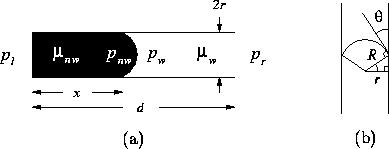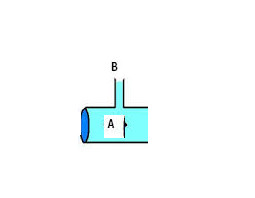I'm looking into capillary flow in a tube as explained in this link. The system consists of two liquid phases, one wetting and one non-wetting, inside a tube,
What is the relation between the inlet pressure $p_i$ and the outlet pressure $p_r$? I would personally expect that $p_i>p_r$ due to the capillary forces that establish a pressure gradient.
EDIT: In the figure below the point B denotes the tube above and the point A the reservoir that the tube is "attached" to. Say that the velocity in reservoir A is nonzero -- then by Bernoulli's law, should the pressure in reservoir A be lower than that in tube B?


